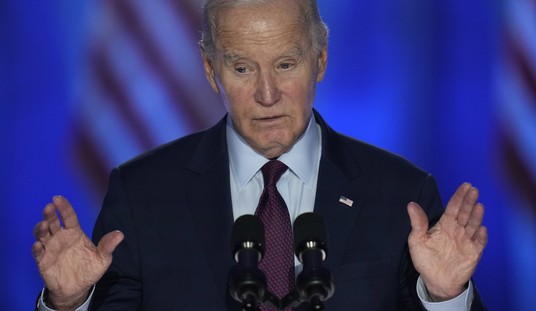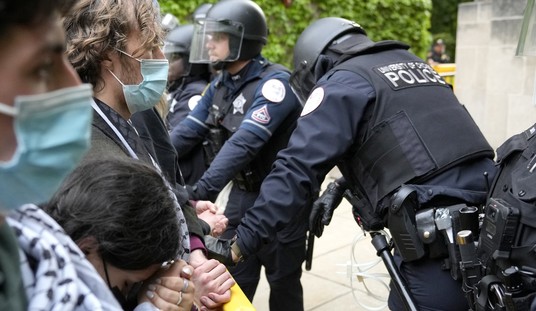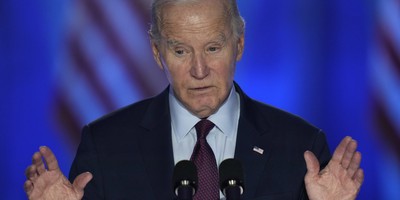Air travel has become a frustrating and intrusive bore. In the May issue of Townhall Magazine, where this article originally appeared, Chris Edwards explains how we can put the fun back in flying by bringing freedom to the skies.
In discussing one of her main achievements as British prime minister, Margaret Thatcher said, “privatization is at the center of any program of reclaiming territory for freedom.” One area where Britain reclaimed a lot of freedom is aviation. Since the 1980s, that nation has privatized airlines, airports, air traffic control, and in some cases airport security screening.
Thatcher’s privatization revolution spread around the world, including in the aviation industry. Many countries in Europe have privatized their airports, and most use private airport screening. Canada privatized airports, air traffic control, and its largest airline. It also uses private screening companies at its airports. Under these reforms, governments have not only retained oversight for aviation, but they have also opened the door to greater efficiency and innovation in formerly bureaucratic industries.
Unfortunately, the privatization revolution in aviation has not yet spread to the United States. We’ve always had private airlines, but the rest of our aviation system is run by the government. The Transportation Security Administration runs airport screening, while the Federal Aviation Administration runs air traffic control. Our commercial airports are generally owned by state and local governments.
But U.S. aviation is too important to leave to government. It is a giant industry that serves 740 million travelers every year and provides a crucial service to every other industry. Aviation will keep on growing, but it will need ever more complex systems to keep up with rising demands and increased international competition. Our government aviation bureaucracies are not up to the challenge.
A Bureaucratic Nightmare
Let’s look at TSA. The agency was created in a rush after the terrorist attacks in 2001. Congress and the George W. Bush administration moved rashly to nationalize airport security screening without appreciating the downsides of a government takeover.
TSA’s main activity is operating passenger and baggage screening at the nation’s 450 or so commercial airports. It has an annual budget of $8 billion and more than 60,000 employees. About 85 percent of the employees are airport screeners.
Nationalizing U.S. airport screening was a mistake. One of the principal architects of the 2001 TSA legislation, Rep. John Mica (R-FL), has called the agency a “bureaucratic nightmare” with a “track record of security failures.” He says that TSA has a “penchant for bungling aviation security and wasting taxpayers’ money.” Even former TSA chief Kip Hawley has called TSA “hopelessly bureaucratic.”
Recommended
TSA’s huge, and now unionized, labor force has been one source of problems. The Government Accountability Office found in 2012 that TSA ranked 232 out of 240 federal agencies in terms of employee satisfaction. The GAO reported in 2013 that there has been a large increase in TSA employee misconduct in recent years.
One workforce problem has been substantial employee theft from passenger baggage. Another problem has been a rash of incidents at airports where workers are found not following security procedures. Mica calls these episodes TSA “meltdowns.”
Billions Wasted
The TSA is no better at managing investments than it is at managing its workforce. TSA has spent billions of dollars on programs that have shown few benefits:
Security experts, such as Mark Stewart and John Mueller, have criticized TSA for not allocating its resources based on detailed risk assessments. And TSA tends to proceed with expensive projects, such as the AIT machines and the SPOT program, before it even completes cost-benefit analyses to see whether they are worthwhile.
Private Sector Does It Better
Despite all of TSA’s spending on technology and its huge workforce, the agency’s performance has been underwhelming. In 2005, the Inspector General of the Department of Homeland Security concluded: “The ability of TSA screeners to stop prohibited items from being carried through the sterile areas of the airports fared no better than the performance of [private] screeners prior to September 11, 2001.”
Over the years, auditors have been able to do head-to-head comparisons of federal vs. private airport screening because 16 U.S. airports have been allowed to use private contractors. Here are some of the comparison results:
• A 2004 study by a consulting firm for TSA found that private screeners performed as good or better than TSA screeners.
• A 2005 study by GAO found that private screeners did a better job than TSA screeners.
• A 2007 study by a consulting firm for TSA found that “private screeners performed at a level that was equal to or greater than that of federal” screeners.
• A 2008 TSA study compared screening at six private-screening airports with six federal-screening airports and found the performance to be similar.
Thus after a decade of experience, it appears that the overall performance of privatized screening companies is at least as good as, if not better than, government screening. But there are other reasons why policymakers should privatize screening.
Private screening could result in better customer service, which is an important concern of airports that want to stay competitive with other modes of travel. Another advantage is increased staffing flexibility, which is a useful tool to reduce congestion. Under TSA’s centralized and unionized system, airports face bureaucratic hurdles in adjusting the number of screeners as their passenger demands fluctuate.
Private screening operations would be more efficient. A House Committee on Transportation and Infrastructure report in 2011 found that the private screeners at SFO were much more efficient than the federal screeners at LAX. SFO screening operations also had lower employee attrition rates than LAX, leading to reduced costs for recruitment and training.
Private screening companies would have incentives to invest in those machines and procedures that had the best payoffs in terms of added security. By contrast, that is not the way that the government usually works—it tends to roll out expensive ‘solutions’ without adequate research, and it resists efforts to cut programs when the benefits do not materialize. That is the case, for example, with TSA’s SPOT program.
Privatization would create opportunities for innovation, which is often stifled under government monopolies. In other countries, aviation security firms have developed a great deal of expertise. They respond to the demands of their clients, and they apply the best practices learned across the airports they serve. Private businesses make mistakes, but unlike government bureaucracies they are more likely to improve their performance over time, especially when they face stiff competition.
A Threat to Civil Liberties
Last, but not least, are civil liberties issues. TSA has problems with “mission creep,” sometimes acting as if it had broad police powers outside of its transportation security role. TSA’s practices have pushed at the boundaries of permissible searches and seizures, and the intrusiveness of TSA pat-downs are infamous. Some reported incidents of TSA pat-downs of children, the disabled, the elderly, and people with medical conditions have been appalling. Private screening firms would have a greater incentive to stay within legal bounds and to treat people with respect.
So we should move responsibility for screening operations out of the hands of the federal government and to the nation’s airports. The airports could then hire expert screening companies and pay for those services through charges on airport users. If security companies did not achieve high-quality screening results, then airports could fire them.
As aviation expert Robert Poole has noted, with this structure airports could create a more integrated and effective security system because they would be responsible for both general airport security and screening. Security staff could be cross- trained among functions at airports, for example, which would both improve morale and enhance skills.
With such reforms, the federal government would retain oversight of aviation security, and also retain its crucial role in aviation security intelligence. But privatizing screening would end TSA’s conflict of interest stemming from that fact that it currently operates airport screening and also oversees it.
Privatization’s Proven Track Record
This is the approach taken by many other advanced economies. More than 80 percent of Europe’s commercial airports use private screening companies, including those in Britain, France, Germany, and Spain. According to Poole, Europe’s airports moved to private contracting during the 1980s and 1990s after numerous hijackings and terrorist incidents, and the system has worked well.
Canada also uses private screening companies at its commercial airports. After 9/11, that nation created an oversight authority for aviation security at its 89 commercial airports. But the screening itself is carried out by expert private firms, which compete for contracts to handle different airports.
Air Traffic Control
The failures of TSA are similar to those of the Federal Aviation Administration. The FAA has had labor problems and problems in making efficient investments. President Reagan famously fired the air traffic controllers in 1981, but the FAA workforce still has a powerful union.
The fundamental flaw with the nation’s air traffic control system is that the government runs it as a giant bureaucracy from Washington. But ATC is actually a high-tech business. It should be set free in the private sector to grow, innovate, and respond to market demands.
For decades, FAA has been plagued by cost overruns and delays on its technology upgrades. The agency is currently struggling with the huge NextGen project to bring the ATC system into the modern era of GPS and digital communications. These technologies would expand our airspace capacity and allow shorter flight paths, which would save time, fuel, and costs.
However, “more than one-third of the 30 contracts critical to building a new U.S. air-traffic system are over budget and half are delayed ... Fifteen of the contracts are behind schedule by an average of four years,” a report in Bloomberg warned. NextGen will need a high level of expertise to implement, but the FAA does not seem to be up to the task.
A 2013 report from the United States Travel Association warned that our “air traffic control system uses technology from the World War II era that causes systematic delays and cancellations.” And it said, “NextGen remains mired by setbacks, cost overruns, and delays as a result of FAA mismanagement.” A 2013 study from the Eno Center for Transportation had similar conclusions. It noted that “stakeholders are losing confidence in FAA’s ability to move forward” with NextGen. The fact that FAA and NextGen are dependent on the chaotic federal budget process does not help matters.
The solution is to privatize our ATC system. That would give it independence from the federal budget so that managers could efficiently plan their capital investments funded from market-based revenues. With privatization, ATC managers would have the flexibility to recruit skilled workers, to cut costs, and to restructure their operations as markets changed.
Canadian reforms provide an excellent model for the United States. Canada’s ATC system was privatized in 1996 and is run by the nonprofit corporation Nav Canada. The company is self- supporting and raises revenues from customer charges to cover its operating costs and capital investments. Nav Canada is a transparent business, publishing regular reports detailing its financial, operational, and safety metrics.
Nav Canada runs one of the safest ATC systems in the world. It has a great record on innovation, and it is increasingly selling technologies it develops abroad. Nav Canada is a “global leader in delivering top-class performance,” says the International Air Transport Association, which has given the agency numerous awards. Don’t Americans also deserve to have an award- winning ATC system?
Privatize the Airports Too
Government airports are another barrier to efficiency in U.S. aviation. Airports are generally owned by state and local governments, but the federal government subsidizes and regulates them. Government operation of airports is out-of-step with today’s competitive and globalized aviation industry.
The USTA report complains that “Congress is not step- ping up to modernize airports.” But Congress also restricts airports from raising fees to fund their own investments, and federal policies favor government-owned airports over possible private airports. The Eno Center report says that federal funding for “airport improvements is provided in a highly politicized manner with little regard for return on investment.” That, of course, is a common problem with government infrastructure.
U.S. airports should be privatized, which would allow them to fund their own improvements in a market-driven manner outside of politics. That has been the reform approach of dozens of airports in major cities around the world. Some airports are private, for-profit entities, such as London’s Heathrow. Others are private, nonprofit entities, such as Canadian airports. In both cases, the goals of privatization are the same: to depoliticize the airport business, to improve management, to reduce costs, to increase innovation, and to allow managers access to investment funding from customer charges and capital markets.
Bring Freedom Back to the Skies
America has long been a leader in aviation. But today we are smothering our aviation industry with government ownership, subsidies, and regulations. We should move responsibility for security screening to the airports, and allow them to contract to expert private firms. We should privatize air traffic control using the successful Canadian approach. And we should privatize our commercial airports so that they can efficiently meet the rising demands of U.S. and international travelers.
Hopefully we can once again make air travel fun rather than frustrating. But in the tradition of Margaret Thatcher, we first need to reclaim territory for freedom in the aviation industry.
Chris Edwards is editor of www.DownsizingGovernment.org at the Cato Institute.























Join the conversation as a VIP Member